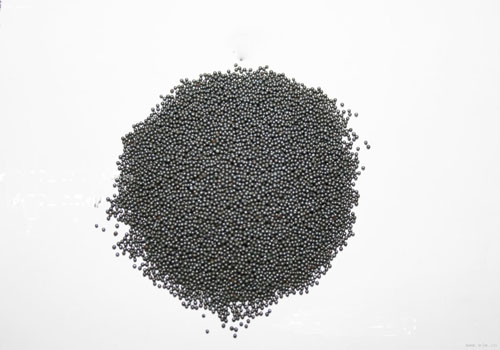
When abrasives manufacturers choose what kind of abrasive grains to buy, they are suggested to take properties into consideration.

When abrasives manufacturers choose what kind of abrasive grains to buy, they are suggested to take properties into consideration. Among all its properties, hardness, shape, color, chemical composition, availability, cost and environment are the essential properties that matter.
1. Hardness
Abrasive grain's hardness decides whether sand blasting grain can form etch or cable shape on specific surface. A criterion to decide abrasive grain hardness is Mohs hardness measurement. Mohs hardness ranges from 1 to 10. 1 means softest (mica) and 10 means hardest (diamond). Usually sand blasting grains that can form cable shape is 6.0 or higher in hardness. But there are some soft grains that are 3.0 to 4.5 in hardness. Those soft grains may not form etch on glass or steel surface, but it can remove dirt and help keep surface clean. Steel grit and steel shot belong to hard abrasive grains which use RockwellC as hardness measurement that is around 42 to 65. Steel grit forms etch on steel surface while steel shot forms a dent.
2. Shape
Abrasive grains have different shapes, such as angular, block, half round or ball. Angular abrasive grains with sharp edge performs best when cleaning the dirt or attached substance on substrate materials. Its sharp edge can help to form etch on steel surface to provide favorable machinery attachment. Except for dirt that is extremely difficult to clean, block abrasive grain can guarantee a pretty good cleaning ability.
3. Color
If we are considering which type of abrasive grains to choose, the color is not so important. But under some situation it is a key factor. Sand blasting surfaces residue will influence the appearance. Black abrasive grain does not tend to reflect sunshine and accumulate less dust than light colors, so it is important when sand blasting in inner regions that want lighting. If in a confined area, abrasive grains are not easy to be cleared, so choice of color is important.
4. Chemical Composition
To guarantee compatibility with substrate material, abrasive grain chemical composition has to be taken into account. During sandblasting process, abrasive grains will embed in substrate materials or leave waste, which are harmful to protective coating system. If adopting iron sand blasting to stainless steel substrate materials, embedded grains will form corrosion electrode.
5. Availability
We have to ensure that sand blasting grains have abundant supply and easy to gain so as to guarantee best results. Changing abrasive grains midway is not suggested. Many abrasive grains are natural minerals or by-products of other industries, so bulk goods are not realistic.
6. Cost
Abrasive grain is a key factor in engineering. More often than not, the transportation expense from supplier to construction site decides abrasive grain choice. Breakage rate also matters. We can recycle by sandblasting cabinet or sandblasting room with recovery system to decrease high abrasive grain cost.
7. Environment
Environment is the last factor that may influence abrasive grain choice. Environment has a n influence on sandblasting worker breath. During sand blasting process, workers must use breathe equipment and control the whole sandblasting process. When sandblasting region is poorly ventilated, correct dust recycling equipment has to be used to diminish the dust around workers. Besides, measures should be taken concerning abrasive grains dispersed in soil.